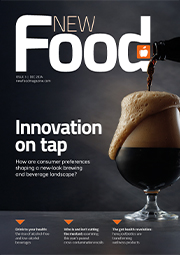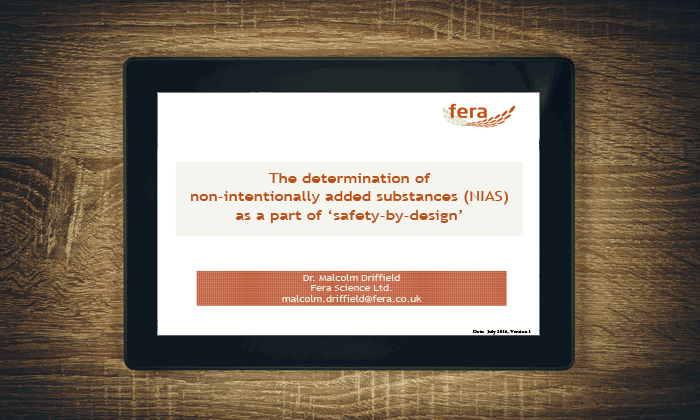Whitepaper: The determination of non-intentionally added substances (NIAS) as a part of ‘safety-by-design’
- Like
- Digg
- Del
- Tumblr
- VKontakte
- Buffer
- Love This
- Odnoklassniki
- Meneame
- Blogger
- Amazon
- Yahoo Mail
- Gmail
- AOL
- Newsvine
- HackerNews
- Evernote
- MySpace
- Mail.ru
- Viadeo
- Line
- Comments
- Yummly
- SMS
- Viber
- Telegram
- Subscribe
- Skype
- Facebook Messenger
- Kakao
- LiveJournal
- Yammer
- Edgar
- Fintel
- Mix
- Instapaper
- Copy Link
Posted: 14 February 2018 | Fera Science Limited | 2 comments
With no legally prescriptive guidelines on how to assess the safety of NIAS, what approach should be taken?
Ever-advancing analytical instrumentation provides very powerful tools for determination of IAS and NIAS. As instruments become more readily available and sensitivity increases there is the potential for more and more NIAS to be detected. However, identification and quantification are still providing challenges.
Framework regulation state that FCM manufacturers are obliged to ensure the safety of their products and that safety of NIAS must be assessed. However, presently there are no levels of migration or exposure set for which compliance with this requirement can be demonstrated.
This whitepaper is restricted - login or subscribe free to access


Why subscribe? Join our growing community of thousands of industry professionals and gain access to:
- bi-monthly issues in print and/or digital format
- case studies, whitepapers, webinars and industry-leading content
- breaking news and features
- our extensive online archive of thousands of articles and years of past issues
- ...And it's all free!
Click here to Subscribe today Login here
Related content from this organisation
- Feeding the future: why UK food companies are betting on apprenticeships
- Where are we with ‘forever chemicals’?
- The complexities of CBD
- Whitepaper: Whole Genome Sequencing for food safety FSA Chief Scientific Advisor Report and 2013 Listeria pilot study
- Whitepaper: Fapas – Putting the ‘Quality’ into External Quality Control
Related topics
Contaminants, Food Safety, Ingredients, Regulation & Legislation










Downloading of white paper is not possible.
Hi Inge, it’s now working, please accept our apologies for any inconvenience.